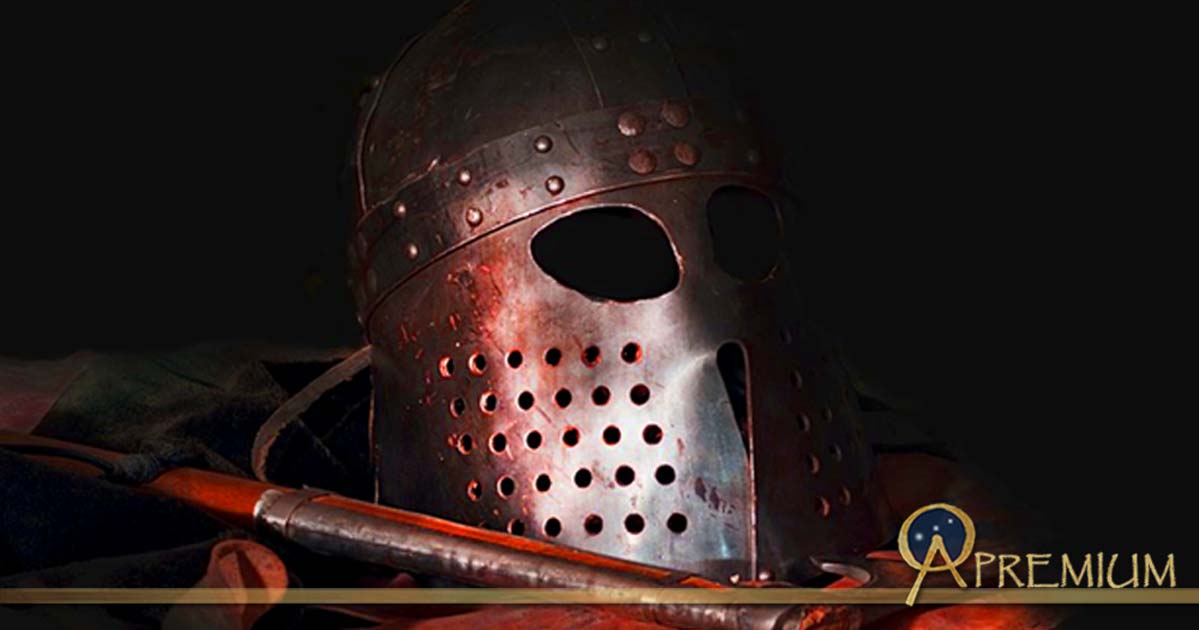Burning, Pillaging, and Carving up the Lands: Viking Raids into England - Part II
Vikings in history and popular culture are known as strong and dangerous, bloodthirsty killers, raiders, pillagers – pirates of land and sea. But who were the Vikings, and what were the causes of their raids across Northern Europe during the Viking Age?
Viking Raids of England
In 835, Danish Vikings began their raids along the English coasts. As the years went on, the raids grew in size.
In 838, a large body of Vikings landed in Cornwall, and was joined by Cornish rebels, but they were soon defeated by King Egbert of Wessex at Hingston Down, by the river Tamar.

A miniature of King Egbert of Wessex (Public Domain)
The Vikings continued their raids on England in both 841 and 844. However, in 851 the Vikings came in even larger numbers. Three hundred and fifty Viking ships anchored in the Thames—and when they stepped ashore, they burnt Canterbury and London.

Viking reenactors (Henri Bergius/CC BY-SA 2.0)
King Beorhtwulf of Mercia tried to beat back the Vikings but was defeated and fled the field of battle. The Viking victory over Beorthtwulf allowed King Aethelwulf of Wessex enough time to assemble his forces. Once the Vikings re-crossed the Thames, Arthelwulf “fought against them at Acleah, and there made the greatest slaughter of heathen host.” While a great victory was had, and the raids ended temporarily, it was just the beginning of more to come.

The Vikings seemed to come endlessly in vast numbers. (Public Domain)
The Great Viking Army
In 865, seven years after Arthelwulf’s death, the Danes had been raiding the coasts and were preparing for a large invasion headed by Ragnar Lothbrok, Ivar the Boneless, Halfdan, and perhaps Ubbi, along with lesser kings and Jarls. The Great Viking army disembarked in East Anglia. Their mission was to preceded northward with the intent to overthrow the kings of Northumbria and occupy the Vale of York, which they accomplished in 866. Northumbria was devastated, but not defeated, since some native rulers held out in Bernicia.
- Ruthless Perception of Vikings Returns as Evidence of the Use of Slaves During the Viking Age Comes into Focus Yet Again
- Survey Shows About Half of Brits Wish They Were Descended from Vikings…and Many Probably Are!
- Norsemen transformed international culture, manufacturing, tech and trade during Viking Era
- Wealthy Vikings Wore Blue Linen Underwear

Movements of the Great Heathen Army of 865 (Hel-hama/CC BY-SA 3.0)
The Vikings, seeking more wealth, made their way south, placing relentless pressure on Merica; they quickly succumbed to the Viking pressure and paid a ransom (Danegeld), and did so again in 869.
Looking to expand their sphere of influence, the Vikings then headed towards East Anglia, then ruled by King Edmund, where they defeated and killed him in November 869, along with handily crushing Anglo-Saxon resistance at Hoxne and Suffolk. With East Mercia and Anglia under Danish control, they moved further into the rich, untouched areas of England.
Late 870, the Vikings, led by Halfdan, moved into Reading, where they quickly set up a fortified camp to pillage the region. Even though the Vikings won many victories, they were beaten by King Aethelred I and his brother Alfred in 871. However, the victory was short lived; the Vikings continued to place pressure on Wessex, causing Alfred, who succeeded his brother, to deciding on paying the Danegeld.

The runestone U 241 in Lingsberg, Uppland, Sweden, was raised by the grandchildren of Ulfríkr circa 1050 in commemoration of his twice receiving danegeld in England. (Berig/CC BY 2.5)
Even though Alfred agreed to pay the ransom, the many hard-fought battles between the two forces saved Wessex from further encroachments.
While Wessex was safe for the time being, Mercia fell hard. The Viking army moved from base to base in Mercia from Reading, London, Torkey, Repton, and Cambridge. However, it was at Repton around 874 that King Burgred fled his kingdom and left it in the hands of the Viking Ceolwulf.
In the few years since the Vikings had arrived in England, they had nearly taken the entire country. With Northumbria, East Anglia, and Mercia under their control, Ceolwulf wanted more. He wanted the entire island!
Like this Preview and want to read on? You can! JOIN US THERE ( with easy, instant access ) and see what you’re missing!! All Premium articles are available in full, with immediate access.
For the price of a cup of coffee, you get this and all the other great benefits at Ancient Origins Premium. And - each time you support AO Premium, you support independent thought and writing.
Cam Rea is an author and military historian. He has written numerous articles for Ancient Origins, Classical Wisdom Weekly, and has authored several books, including: March of the Scythians: From Sargon II to the Fall of Nineveh
--
Top Image: Recreated Viking helmet and weapon (Public Domain); Deriv.
By Cam Rea



















Comments
Thanks for mentioning Cornwall and the rebels, wasn’t just the one time Vikings popped down here.
In Anglia et Cornubia.